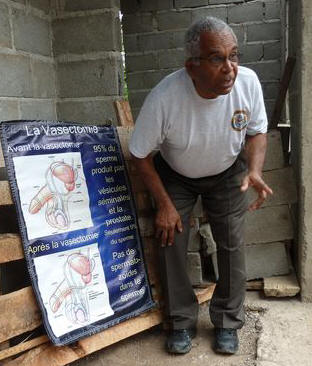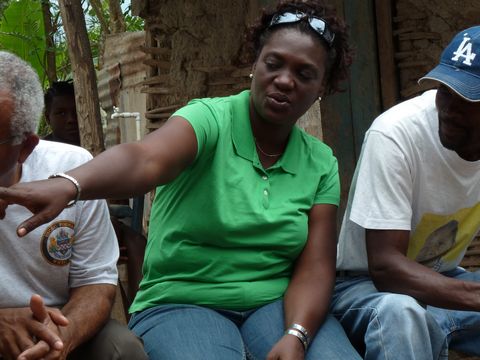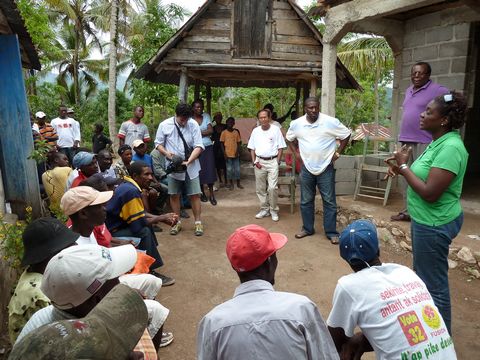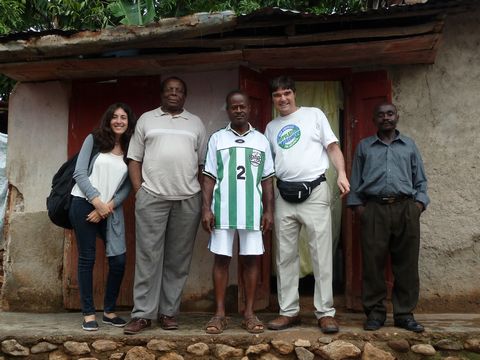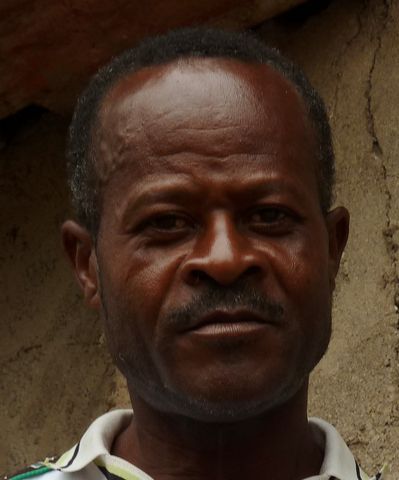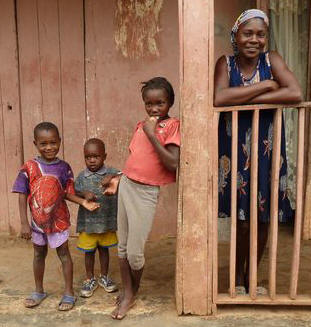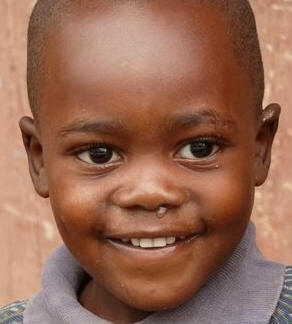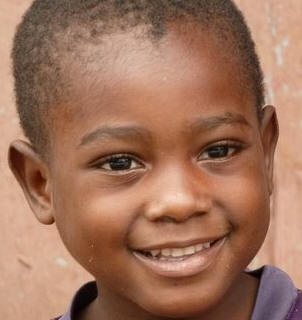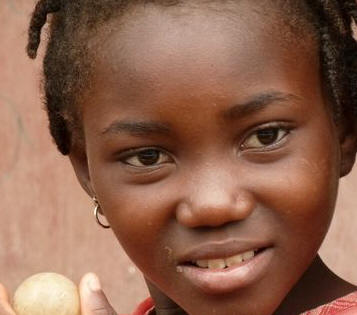NSVI Vasectomy Mission in Haiti --
May 30 - June 3, 2011
by Doug Stein, MD
Following NSVI's successful mission to the Philippines in February in the company of Gabriel Films, we began to make plans for a second mission to Haiti. Dr. Fritz Lolagne had accompanied Dr. Ramon Suarez and myself to the World Conference on NSV in Goa, India just prior to the Philippines Mission, and he remained as inspired as ever to promote vasectomy in Haiti, but, while he remained very busy with tubal ligations at many service sites throughout Haiti, his numbers of vasectomies remained very low.
We felt that our success in the Philippines was attributable to three primary factors: (1) With Frohnie Cagalitan, we have an enthusiastic year-round promoter/facilitator right in Cebu, someone who can make arrangements for local newspaper ads and purchase and mount announcement posters at our service sites long before our arrival. (2) The four officers of NSVI have roots and connections in the central Philippines: their alma mater (Southwestern University and Sacred Heart Hospital) is happy to provide one urban setting for provision of vasectomy services, and they are graciously welcomed back to their home towns where health care workers are eager to please their favorite sons and daughters by promoting the vasectomy mission. (3) Working as a non-profit organization without need for support from US government-sponsored agencies such as USAID, we are free to offer small incentives to vasectomy "acceptors", specifically $20 to cover transportation fees and/or income lost on the day of the procedure, a perk to patients that is prohibited within USAID by the Tiahrt Amendment of 1998.
Our goal for this second mission to Haiti was to try to provide for these three elements for success in Haiti. (1) The most difficult of the three elements to duplicate would be Frohnie. As a salaried physician with MSH, Dr. Lolagne is so busy providing family planning services for women fulltime, that he does not have time to handle the administrative work in-country for NSVI, nor the financial resources to hire a "Frohnie" to perform those functions on behalf of NSVI. So we would have to focus on the second two elements.
(2) In Florida, I have had the privilege of providing
vasectomy services to a number of Haitian Americans who have a sense of pride in
their homeland and cultural roots as well as an understanding of how
overpopulation in Haiti is diminishing the hope for social and environmental
recovery there. Patients like Jean Paul (vasectomy in Ft. Myers on 12/5/09) ,
Harry Mauge (vasectomy in Vero Beach on 4/8/11) and Azea (vasectomy in Ft.
Myers on 5/14/11) were eager to accompany NSVI to Haiti to serve as
facilitators/promoters of vasectomy for their former countrymen in their native
language of Creole. In fact, Jean and Harry even joined Dr. Lolagne in preparing
a video that could be shown to prospective patients before and during our
mission as part of the counseling process. Due to occupational commitments,
Harry and Azea could not accompany NSVI on this mission, but Harry recommended
Pastor Amos Myrtil.
,
Harry Mauge (vasectomy in Vero Beach on 4/8/11) and Azea (vasectomy in Ft.
Myers on 5/14/11) were eager to accompany NSVI to Haiti to serve as
facilitators/promoters of vasectomy for their former countrymen in their native
language of Creole. In fact, Jean and Harry even joined Dr. Lolagne in preparing
a video that could be shown to prospective patients before and during our
mission as part of the counseling process. Due to occupational commitments,
Harry and Azea could not accompany NSVI on this mission, but Harry recommended
Pastor Amos Myrtil.
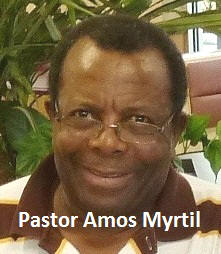 I called
Pastor Myrtil and we made arrangements to meet in his home
town of Labelle (close to Ft. Myers) on the Friday evening before one of my
scheduled vasectomy Saturdays in Ft. Myers. Before emigrating to the US, Amos
was a pastor in a church in Plaisance and returns frequently to administer his
own mission in Plaisance, a sustainable farm called the
Duvivier Haiti Project.
(See Pastor Myrtil's bio here.)
Amos was convinced that men in Plaisance would welcome the opportunity to limit
their family sizes, he offered his home as accommodations for our mission
members, and he set to work through contacts in Plaisance to find a location
where we could perform vasectomies.
I called
Pastor Myrtil and we made arrangements to meet in his home
town of Labelle (close to Ft. Myers) on the Friday evening before one of my
scheduled vasectomy Saturdays in Ft. Myers. Before emigrating to the US, Amos
was a pastor in a church in Plaisance and returns frequently to administer his
own mission in Plaisance, a sustainable farm called the
Duvivier Haiti Project.
(See Pastor Myrtil's bio here.)
Amos was convinced that men in Plaisance would welcome the opportunity to limit
their family sizes, he offered his home as accommodations for our mission
members, and he set to work through contacts in Plaisance to find a location
where we could perform vasectomies.
(3) With regards to offering men reimbursement for transportation costs and a day or two lost from work, we wanted to share our success in the Philippines with some of the Haitian health care officials. So Dr. Lolagne made arrangements for us to meet once again with Dr. Gadner Michaud, the Director of Profamil (the international arm of Planned Parenthood) and for the first time with officials at the Ministry of Public Health.
So we would arrive in PAP on Monday May 30 at noon and meet with health care officials, then travel to the Baptist Mission and Hospital in Fermathe, where NSVI had been so graciously received in August 2010. There we hoped to put on a seminar for local residents about vasectomy on the morning of May 31, followed by vasectomies that afternoon, then start our 6-hour journey to Plaisance with plans to spend the night at a hotel beach resort called Club Indigo. We would hold a public seminar then provide vasectomies in Plaisance on the afternoon of June 1 and the morning of June 2, then return to Club Indigo to wrap up the mission and prepare for our return to the US from the airport in PAP on Friday at noon. We knew nothing about the level of interest at either location as we had received mixed messages from Amos Myrtil's contacts in Plaisance, but we had enough equipment and disposables from my office in Tampa to perform 100 vasectomies if the interest was strong.
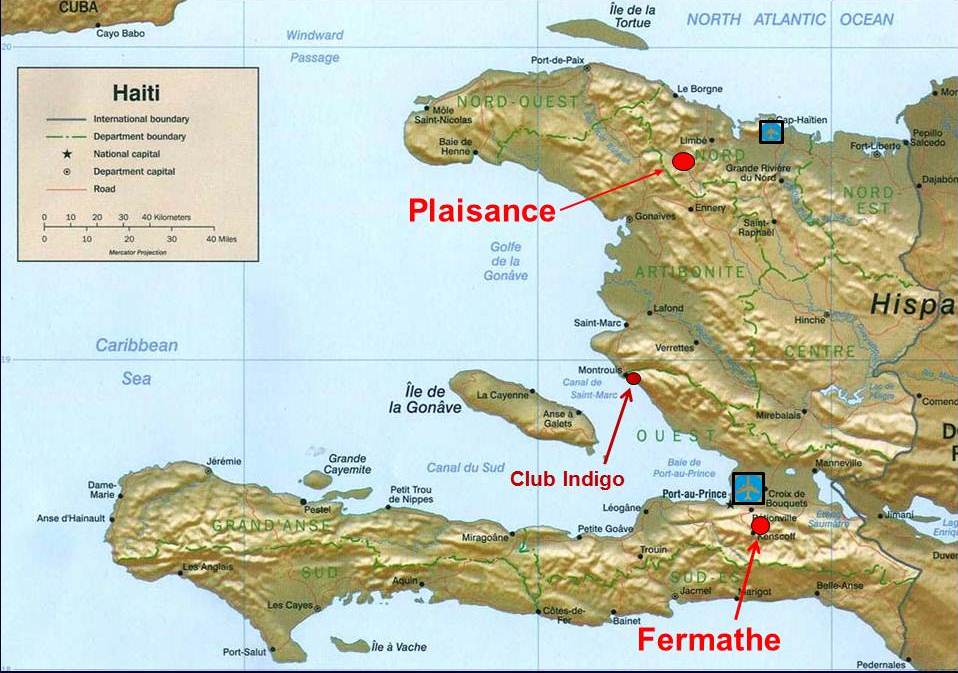 |
||||||
| To prepare for our meeting with the health care officials, Dr. Suarez and I had prepared a pictorial summary of NSVI's challenges and successes in the Philippines as well as a list of all of the obstacles to vasectomy that we had encountered in various cultures and subcultures. | ||||||
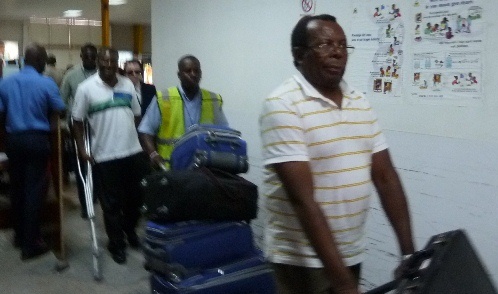 |
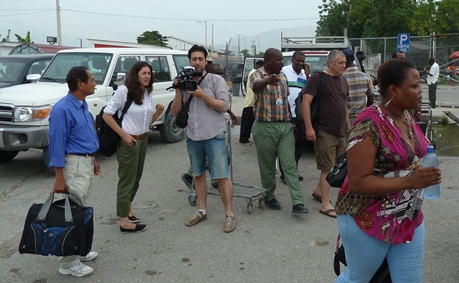 |
|||||
| Despite a painful bout of acute gout necessitating use of a crutch, Jean Paul held the pace as Amos guided us through customs ... | ... and through the throngs of porters anxious to take our bags, and our money. Gabriel Films cameraman Marco takes tips from assistant filmmaker Saralena Weinfield while filmmaker Jonathan Stack (brown t-shirt) carries the valuable tripod despite offers from a porter. | |||||
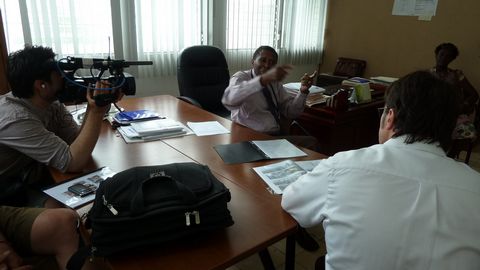 |
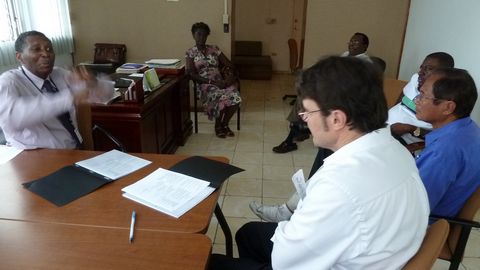 |
|||||
| Always the cordial host, Dr. Michaud followed attentively our pictorial summary of our mission in the Philippines and we shared opinions of the limited efficacy of alternative forms of contraception and the obstacles to making vasectomy a widely accepted form of family planning. He had strong reservations about the use of incentives and thought that acceptance would be more forthcoming with better education. | ||||||
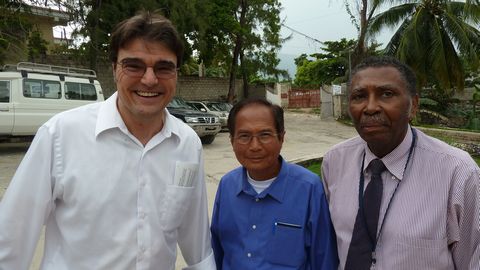 |
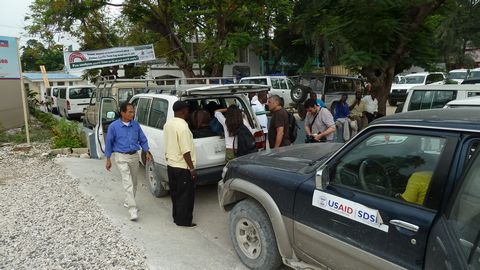 |
|||||
| Those sentiments were echoed by the officials at the Ministry of Public Health and Family Planning. So we resolved to provide the education that was thought to be the key to acceptance. | ||||||
| When we arrived at the Baptist Mission in Fermathe ... | ||||||
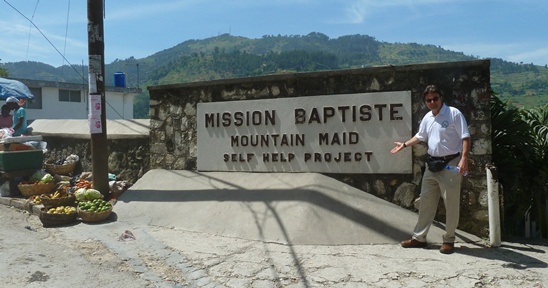 |
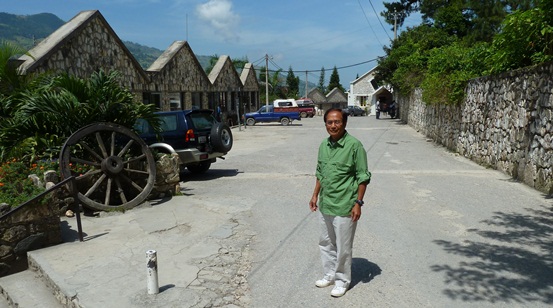 |
|||||
| ... we were pleasantly surprised to learn that there were four men waiting for us to perform their vasectomies. | ||||||
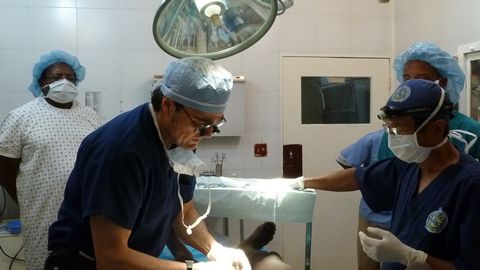 |
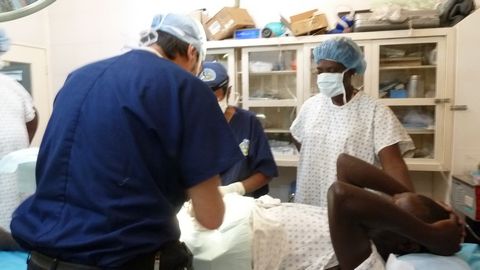 |
|||||
| They had even come from a town outside Fermathe at their own expense. As in the US, there is always that subgroup of men, unfortunately a small minority, who are so eager to end their fertility that they will travel impressive distances to obtain the service. | ||||||
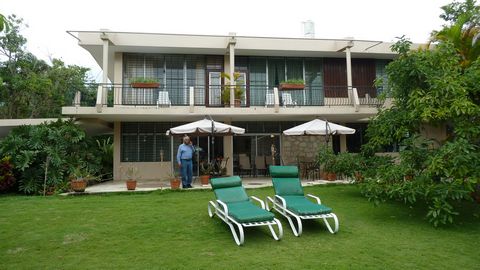 |
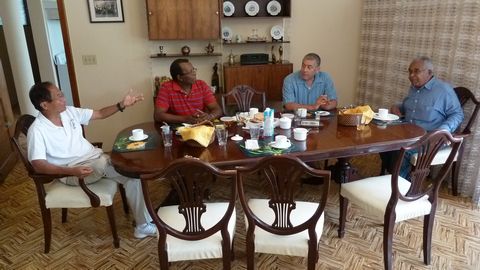 |
|||||
| After a good night's sleep at a
guesthouse arranged by the staff of the Baptist Mission, we reviewed
Amos's plan to "hit the streets" with the announcement that there would
be an educational seminar at 11:00 AM for men who wanted to learn about
a special procedure that would help them avoid future pregnancies. On
arrival back at the Baptist Mission, which is right on the busy main
street of Fermathe, Dr. Suarez and I returned to the hospital before our
support staff and film crew saw two of the men who had undergone vasectomiy the day
before. They had spent the whole night in the parking lot because they
had used all of their money to get to Fermathe for their vasectomies and
now had no money to return home. We gave them 12 dollars each. Amos and Jean told dozens of men about the upcoming seminar pertaining to the free service being offered. The vast majority were not interested. Here was an opportunity to educate and they did not want to learn, certainly not about a procedure that would take away their ability to procreate. We had heard, "It's just a matter of education" many times, and now we were confronted with the stark realization that one cannot force education. We had seen this reluctance in the Philippines, and Haitian men were no different. Filipino men had responded positively to incentives and we were convinced that Hiatian men would also. One man did step forward and underwent a vasectomy on our second day, for a total of 5 in Fermathe, but we had no interest in traveling all the way to Plaisance to perform 5 vasectomies. It was time to try incentives (in Plaisance), and WOW what a difference! |
||||||
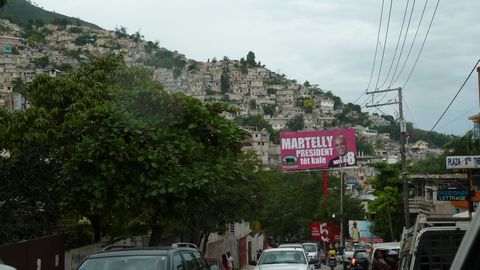 |
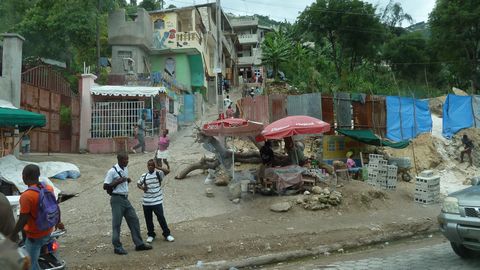 |
|||||
| As we drove out of the hills south of PAP and back into the city, the density of humanity was so great that inhabitants had been forced to seek space and construct shelters on the steep slopes that surround the south side of PAP. | But there are no roads to take these hill dwellers to their homes. People must lug themselves and their provisions up narrow dusty paths to makeshift homes with no electricity, running water, or adequate waste disposal. Ever more evidence of population growth outpacing unfrastructure and promoting inefficiency, disease, and crime. | |||||
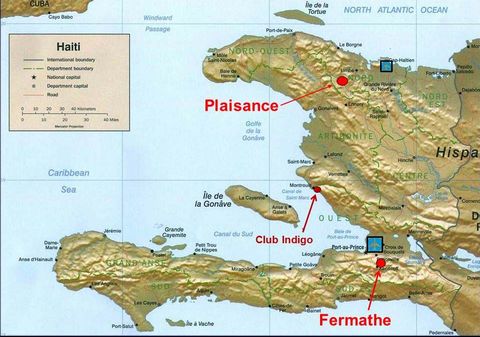 |
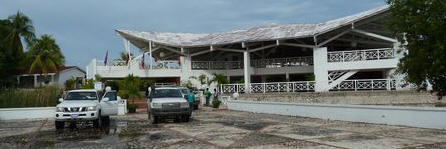 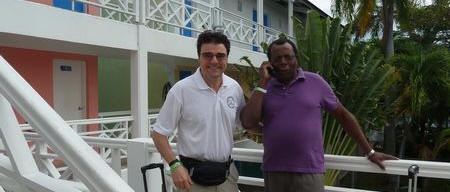 |
|||||
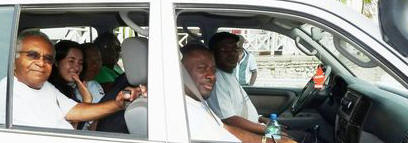 |
 |
|||||
| After a late arrival and a quick night's sleep in colorful Club Indigo, we set out early to complete our journey to Plaisance, one SUV packed with Dr. Lolagne, filmmaker Saralena, Dr. Suarez, Dr. Lolagne's assistant Lisette, and facilitator Jean (in the front seat and still nursing a gouty foot); the other SUV packed with videographer Marco, filmmaker Jonathan, facilitator Amos, and myself. | ||||||
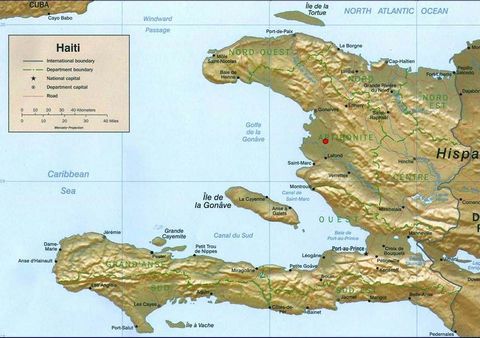 |
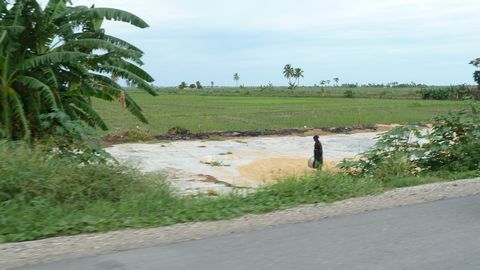 We rode through rice fields of the fertile central plain (red dot in map at left), but Amos assured us that this was nothing like when he was a boy. It was much more productive then, and Haiti had since converted from an exporter to an importer of rice. |
|||||
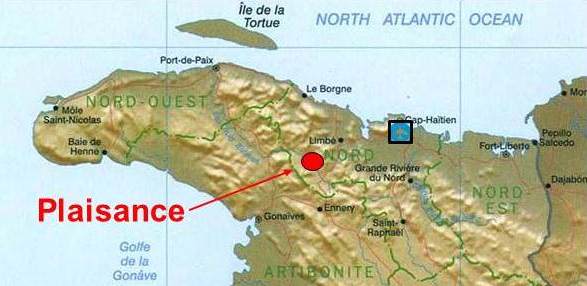 |
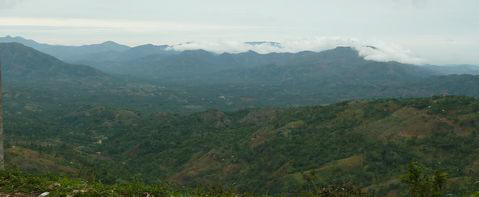 |
|||||
| We ascended into the northern highlands northwest of Gonaives, and when we reached the summit of the range, which marks the border between the Nord and Arbonite departments ... | ... Amos pointed out the town of Plaisance as the faint light spot in the picture above just to the left of dead center. The ridgeline also happened to be a crossroads of sorts where country folks sold all sorts of foodstuffs prepared on outdoor stoves. We were within 30 minutes of Plaisance and Amos went right to work. | |||||
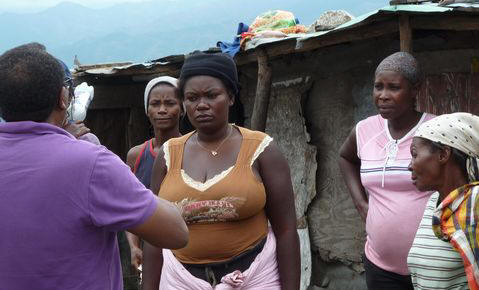 |
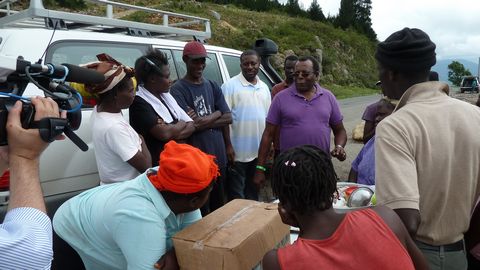 |
|||||
| Amos began talking with the women at first. Then a crowd gathered with increasing numbers of men. He and Jean explained that they had both had minor procedures so that they could nurture and provide for the children that they had already had without overextending themselves.Their wives were then free of the risks associated with unintended pregnancies. In most cases, the men and women HAD NEVER EVEN HEARD OF SUCH A THING. Many were quite amazed that such a procedure was available. | ||||||
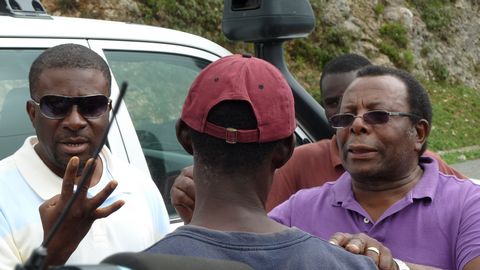 |
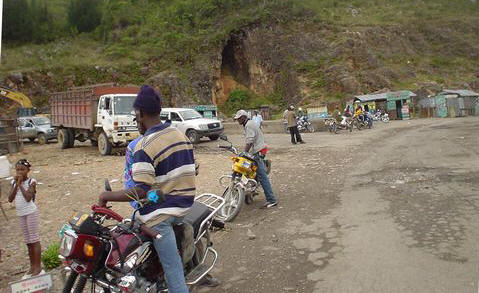 |
|||||
| Jean and Amos explained that they had had vasectomies and that their sexual function remained fine afterwards. There was still some apprehension about an operation on one's private parts, but when Amos told the men that we were offering $20 US to cover loss of a day's potential income, all traces of apprehension disappeared, and four men wanted to come to Plaisance to have the procedure. They had no transportation and our SUVs were full, but Jean offered two motorbike owners $12 apiece to bring a total of 4 men to Plaisance. We were in business. | ||||||
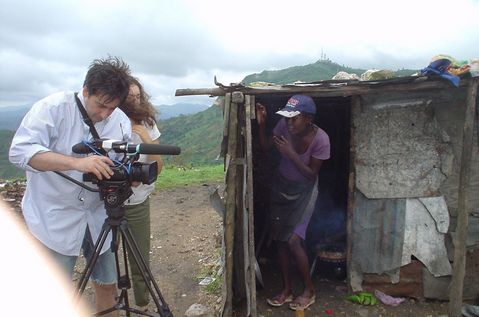 |
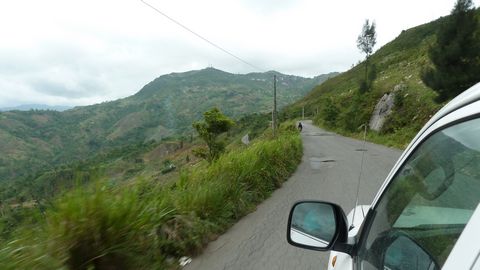 After a few more shots of the locals by the film crew, we continued our journey from the nearly-treeless mountains into the open valley. |
|||||
| The once lush with tropical rain forests were partly destroyed centuries ago for shipbuilding and to make way for coffee and other mountain crops. That destruction continues today as mothers seek fuel to cook for their many hungry children. Without trees, topsoil quickly washes away during the tropical storms that regularly pummel Haiti. And without topsoil, even if alternative fuel sources were made available, reforestation would take centuries. | ||||||
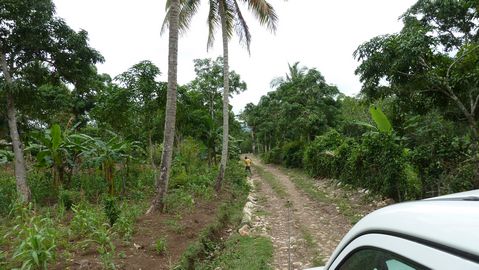 As we neared Plaisance, Amos suddenly told our driver to pull off onto a narrow dirt road. We followed the road to a group of buildings, some primitive homes and some only partly constructed. He announced to the neighbors (again, this is all in Creole) that there would be an educational seminar about a free procedure to help men limit their family sizes, and that men with children who chose to undergo the procedure would be compensated. |
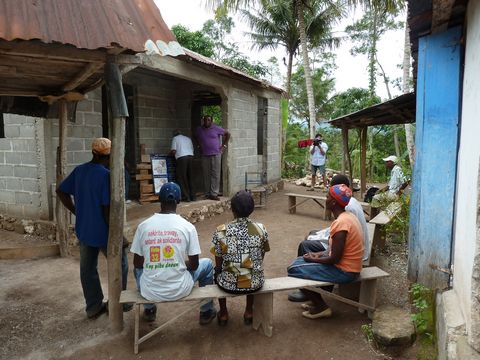 Benches were brought into position, Amos and Dr. Lolagne set up educational anatomy posters, and a crowd began to gather. |
|||||
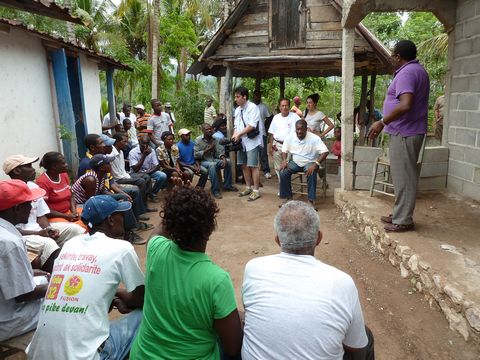 |
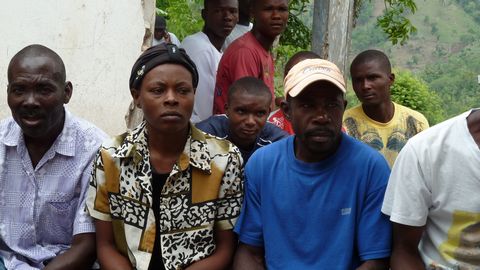 Amos is a preacher, and boy is he good at it! He had that audience transfixed by his presentation about much more than vasectomy. It was about life, and making it better for you and your children, and how can you do that if you never stop having children whom you can barely support? |
|||||
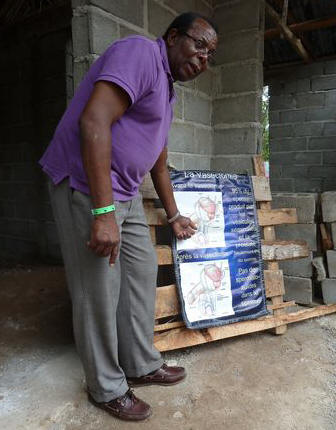 |
Amos was educational, inspirational, and
lighthearted at the same time. He connected.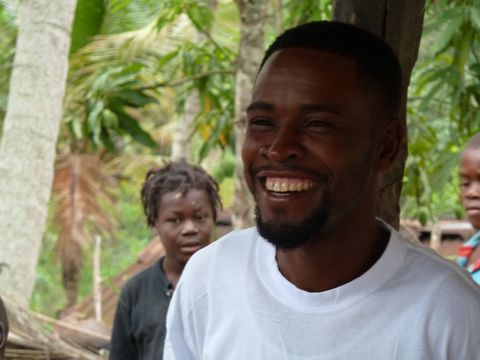 And he shared the spotlight - with ... |
|||||
|
||||||
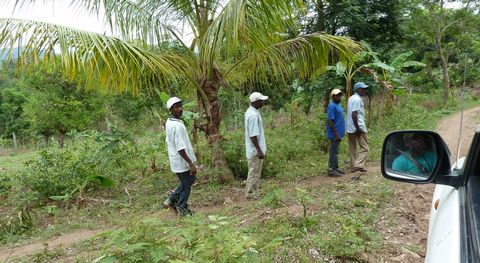 By the time we left, four men were already hiking into town to have their vasectomies. |
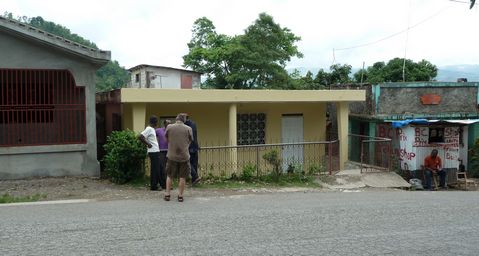 Built on the side of a hill on the main street, the upper level of Amos's house was at street level. |
|||||
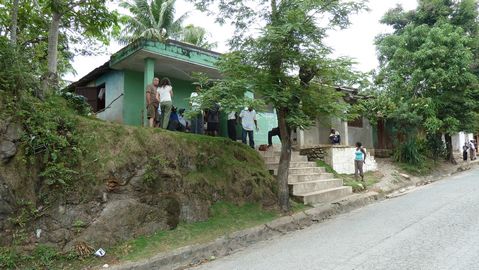 Since his arrival in Haiti 2 days earlier, Amos had been busy on the phone with a son (who lives in Plaisance) finalizing plans for our vasectomy center. It was to be the home of a relative. The two front rooms would be our procedure rooms, while the front porch would serve as our holding area where men would sign consents (Dr. Lolagne provided these) and have their blood pressures checked. |
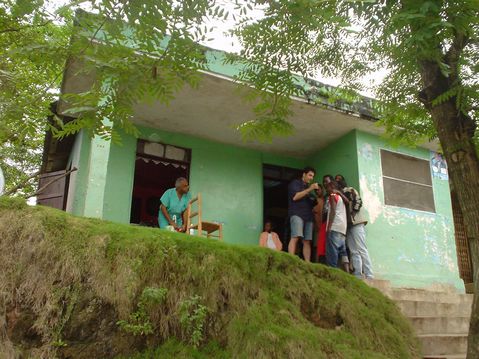 |
|||||
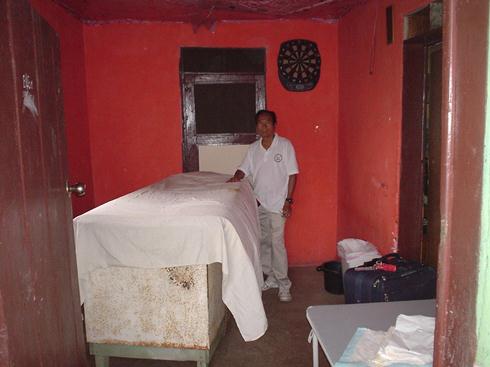 Our table was a wooden platform on which had been placed an old refrigerator on its side. On top of that was a door to add some width, then a 1-inch foam pad for comfort. IT WAS PERFECT! Dr. Lolagne and I unloaded the suitcases of supplies brought from my office in Tampa, including sterile instruments, sterile disposables and resterilizing agents. |
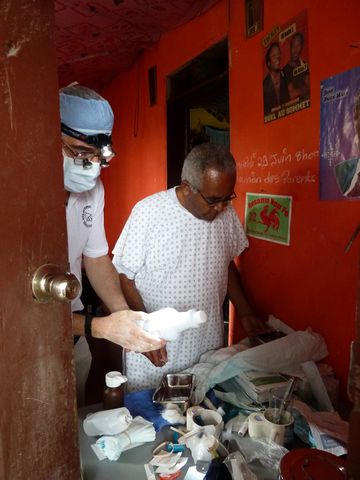 |
|||||
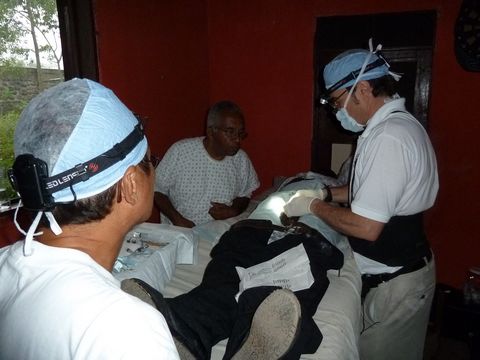 |
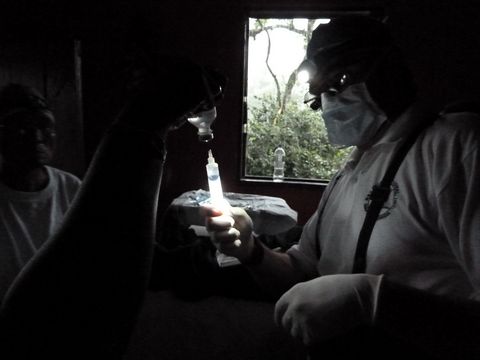 |
|||||
| Within an hour of our arrival in Plaisance, we were operating, and I was delighted to have to tap into our reserves of anesthetic to refill the MadaJet with a syringe. That meant we were doing a lot of vasectomies. | Then the summer rains came, but the roof was good and there were no leaks. There is no public electricity in Plaisance and our hostess did not have a generator. So we were grateful that Dr. Suarez had purchased high-quality headlights in the Philippines. | |||||
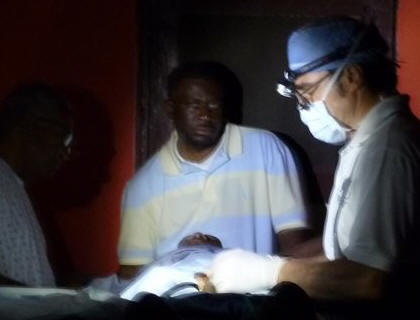 By nightfall, those headlights and the flashlight app of Marco's iPhone4 were the only light we had, but we could see or work just fine. |
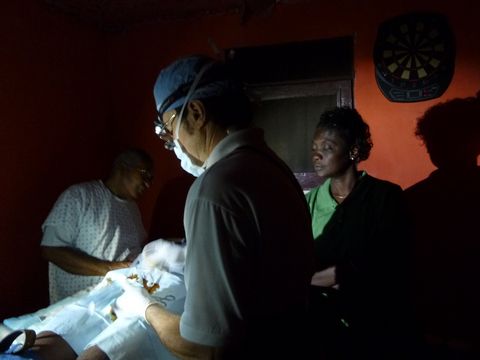 |
|||||
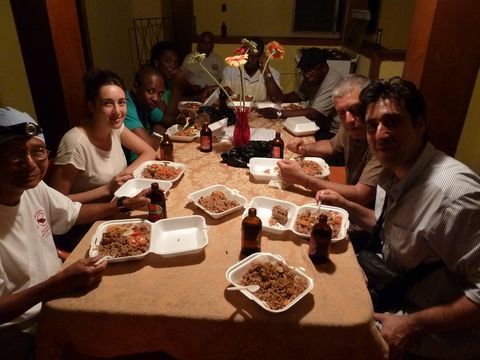 |
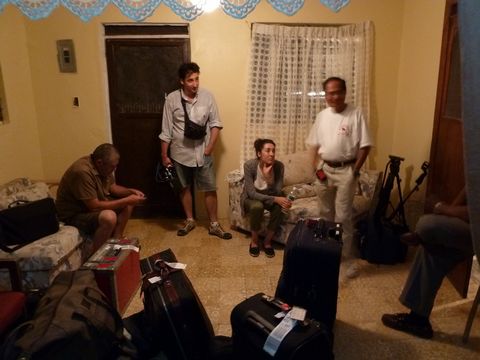 |
|||||
| That evening we enjoyed the
electricity provided by Amos's generator as we feasted on chicken and
rice and basked in the pride of knowing that we had performed three
times as many vasectomies in one day (18) as we had performed during our
whole last trip in August 2010. Most men had had 5-7 children, a few had had over 10 and one had had 23. But we felt best about the 2 men who had had two children. They were especially grateful that we had empowered them to provide well for the two that they'd had and to dedicate themselves to their own educational and vocational progress. |
||||||
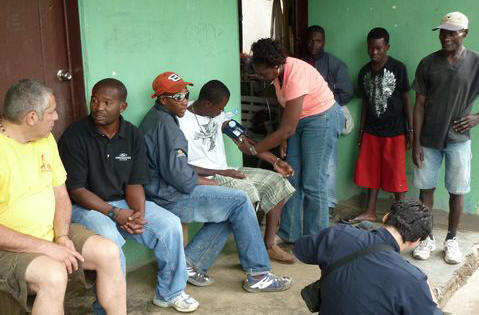 |
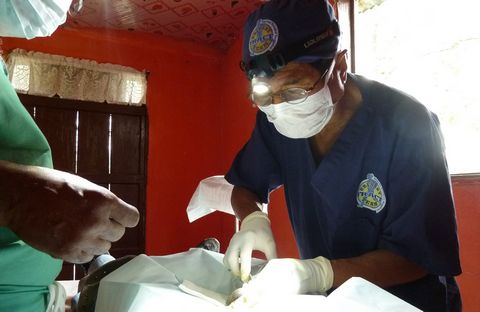 |
|||||
| By early the next morning, word had spread around town that our procedure was not painful, and there was another group of men on the front porch waiting for vasectomies. Dr. Suarez set to work while I went off to visit some patients from the day before. | ||||||
|
||||||
|
||||||
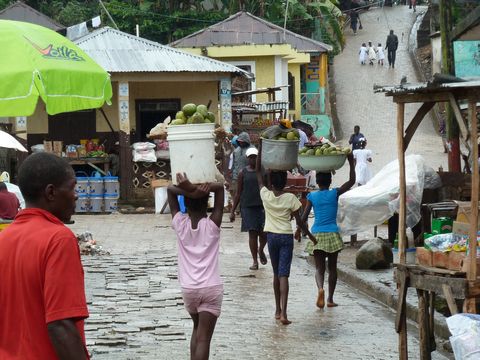 |
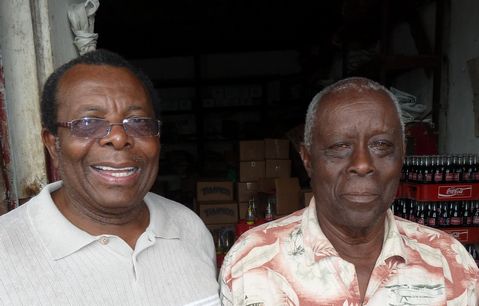 We went to the market in Plaisance where Amos met one of his high school teachers from many years ago. |
|||||
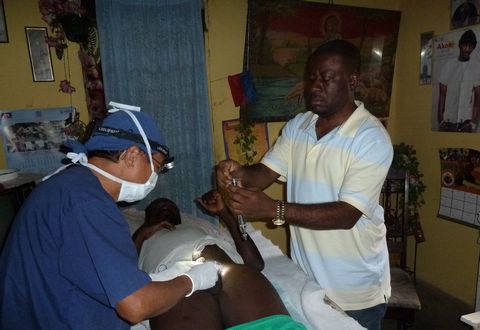 |
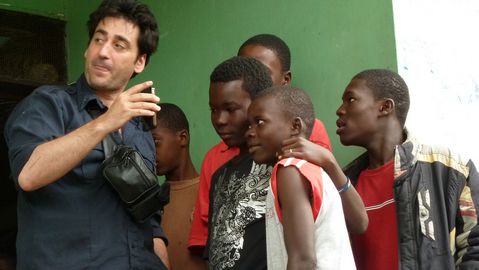 Back at the Vasectomy Center, Dr. Suarez was still going strong (14 cases on day 2) with Jean playing the role of first assistant and Marco out on the front porch entertaining the locals with his iPhone. |
|||||
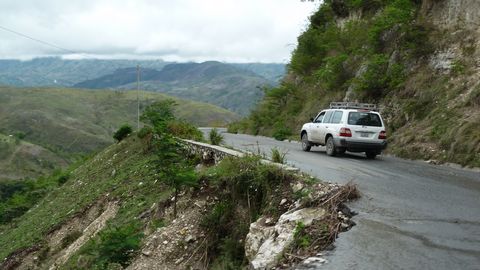 |
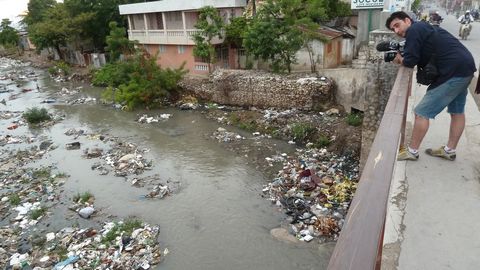 |
|||||
| By late afternoon, we were once again crossing the highlands en route back to Club Indigo for our final night of the mission. | In Saint-Marc, we stopped near the main street bridge over a river leading to the sea. | |||||
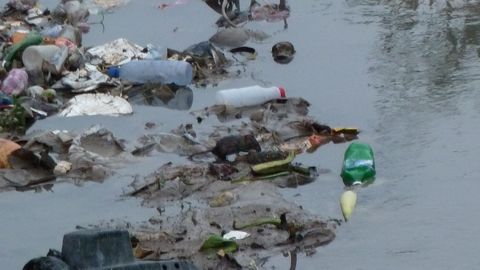 |
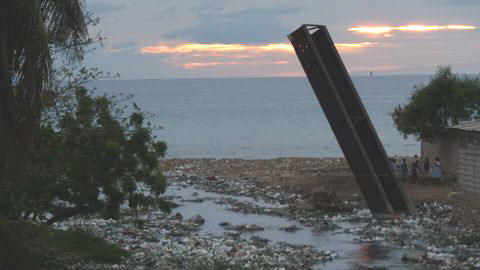 |
|||||
| If you focus too closely on the river, you see critters scurrying about in the garbage. | Better to focus on the distance. | |||||
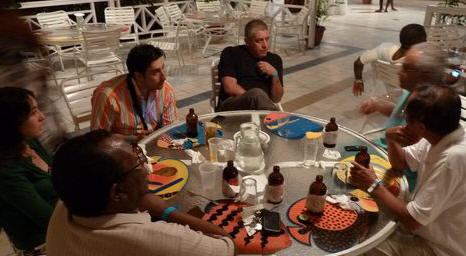 |
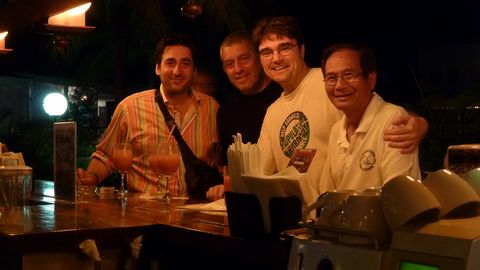 |
|||||
| Back at Club Indigo, we pooled our thoughts about the week. We had scheduled an early morning meeting with officials at the US Embassy involved with the population program. | We felt that we had been in the trenches on the battle lines of population control. We had seen vasectomy candidates refuse education and we had seen incentives succeed. | |||||
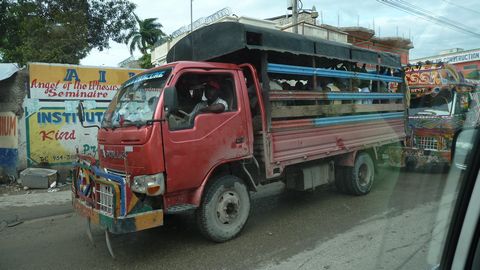 As we re-entered PAP in the early morning hours, we were far from the open hills of Plaisance and back to the world of overcrowded box trucks transporting sweaty bodies like cattle, and tent camps where people live in dark stuffiness. |
 |
|||||
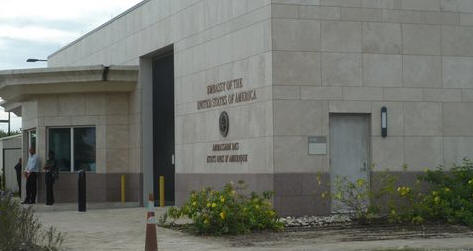 |
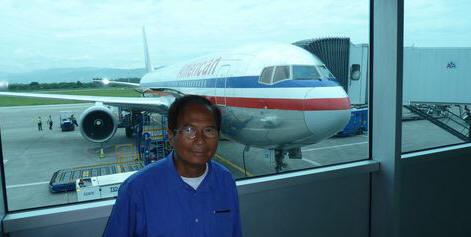 |
|||||
| At the US Embassy, photography was not allowed (as expected) and officials clung to US policy that disallowed the only thing that seems to work in developing countries (as expected). They just don't get it. | Despite our disagreements with our government's policies, we are always glad to return home and grateful to live in a society that allows us to work independently within an economy that is strong enough that some folks earn enough not only to support their own children, but enough to contribute to our cause to empower other men to more effectively support their families. | |||||
Third trip to Haiti: May/June 2011
|
|||||||||||||||||||
